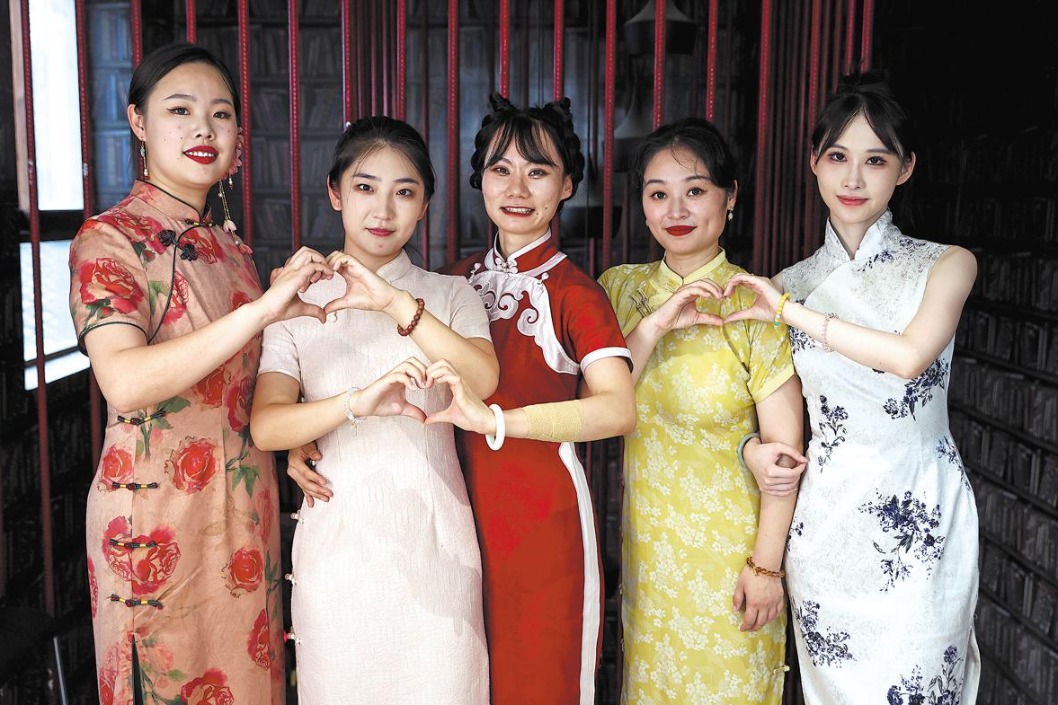Mission to save war relics
Farmer's quest to keep lessons and memories of Japanese invasion alive

Over the past 17 years, Cao Liming has received nearly 500,000 visitors at the Memorial Hall of Peace, a museum in Suifenhe, Heilongjiang province.
The 66-year-old curator started to collect items related to the War of Resistance Against Japanese Aggression (1931-45) in 1986, and founded the memorial in April 2002. In the 300-square-meter memorial hall, there are over 3,000 exhibits, including documents and relics relating to the war.
Cao was born in Muling, and his childhood memories are of older family members expressing their hatred for the Japanese invaders.
"As I grew up, I gradually understood what my family suffered," he recalled. "In 1935, my mother's uncle was captured by Japanese soldiers and forced to work as slave labor in Dongning, never to be seen again."
In the spring of 1945, Cao's grandfather and uncle were also captured and forced to build defensive lines for the Japanese army in Muling.
"Thanks to the Soviet Union's Red Army that joined Chinese military forces to drive out the Imperial Japanese Army, they returned home in August, 1945," he said. "However, they fell seriously ill from overwork and died soon after."
Hidden relics
In 1986, his neighbor sent him a helmet of a Japanese soldier, which brought back memories of the war.
"I decided to collect more items to help more people know the details of the Chinese people's fight against the Japanese, especially the younger generation," he said.
"I hope they can know how precious peace is, and remember their history."
At the time, Cao had achieved great success as a vegetable farmer.
"I still remember that the most I earned in a day was 2,000 yuan in 1983, which was unimaginable for most people at the time," he said. "Relying on my years of savings, I started my collecting journeys around the country."
In 1992, he moved to Suifenhe and settled at the foot of Tianchang Mountain where an important Japanese army garrison had been located.
Even though the garrison had been completely destroyed by artillery fire, some remains of it can be found in the forest.
In 2000, a friend told Cao about some war memorabilia that might be available in East China's Fujian province.
He spent several months traveling to different cities and counties in the province, such as Zhangzhou and Dongshan, where he collected more than 100 pieces, including gas masks, military blankets and uniforms.
"I only took 2,000 yuan and it was not enough to pay for all of it," he said. "To earn money, I found a short-term job making dumplings at a local restaurant."
He spent all his money on the items, and did not have enough funds to pay for the excess baggage on his return trip. "I thought I must keep all the precious relics, so I threw all my clothes away," he said.
Building begins
Before the memorial hall opened, Cao often took his collection to show troops and schoolchildren in the city, garnering a strong reaction.
"Their response gave me great support to continue," he said. "To make it become a permanent exhibition, I submitted an application to the local government for land to build on in 2000."
The government quickly approved his application in accordance with the national public land policy.
But Cao encountered many difficulties, chief of which was raising money to pay for construction work.
"Because of being busy with collecting, I had stopped my business of growing and selling vegetables around 2000. I had spent almost all my savings on collecting. Fortunately, my wife gave me great support. She did various odd jobs to support the family and my dream," he said.
With the money he borrowed from relatives and friends, Cao started construction of the hall in September 2001.
On the opening day, he hung a banner proclaiming "Let the children know the history" on the wall. "It is a promise to the children as well as to myself," he said. "No matter what difficulties I meet, I will stick to it."
Cao has donated nearly 300 documents and relics valued at about 100,000 yuan ($14,000) to several museums in the country. They include the Museum of the War of Chinese People's Resistance Against Japanese Aggression in Beijing, the Memorial Hall of the Victims in the Nanjing Massacre by Japanese Invaders and the Museum of Evidence of War Crimes by Japanese Army Unit 731 in Harbin.
In April 2016, Cao founded a volunteer team named Peace, which has attracted more than 300 members from around China.
The volunteers protect history and culture related to the war, promote national spirit and patriotism, and advocate peaceful development.
"I have become used to my busy but impoverished life. But when I see more people can enjoy the happiness brought from our strong motherland, I think it's all worth it," Cao said.



Today's Top News
- China to open its door to foreign investment wider
- China criticizes Canadian tariffs on products containing Chinese steel
- US legislative chaos undermines its democracy
- Why China is irreplaceable in supply chain
- China's FDI inflow tops $700b since 2021
- Australia, China set to bolster steel partnership






























